Trends 2020: Future Directions

This excerpt from NCFP’s Trends 2020 study shares data and analysis regarding various US family foundation giving trends, including future opportunities, anticipated asset changes, board and staff changes, and much more.
By their nature, family foundations are evolving organizations, with new leaders, programs, and challenges from year-to-year. They are also institutions with family legacies, relationships, and accomplishments. As family philanthropy moves into the next decade, here are some of the future opportunities and challenges that families and donors are facing.
Future Opportunities & Challenges
When asked about their greatest opportunities and challenges, most family foundations (57%) report that increasing overall foundation effectiveness is most important. Family dynamics, especially related to engaging the next generation of leaders, and leadership transitions are also top-of-mind, with 38% reporting this as a factor.
The newest (49%) and smallest (21%) foundations most frequently mentioned growth-related topics (investments, managing incoming assets, etc.). Older foundations more often report engaging younger generations as a top area of focus (26%). Board leadership/transitions are also mentioned by a notable portion of the largest foundations (21%).
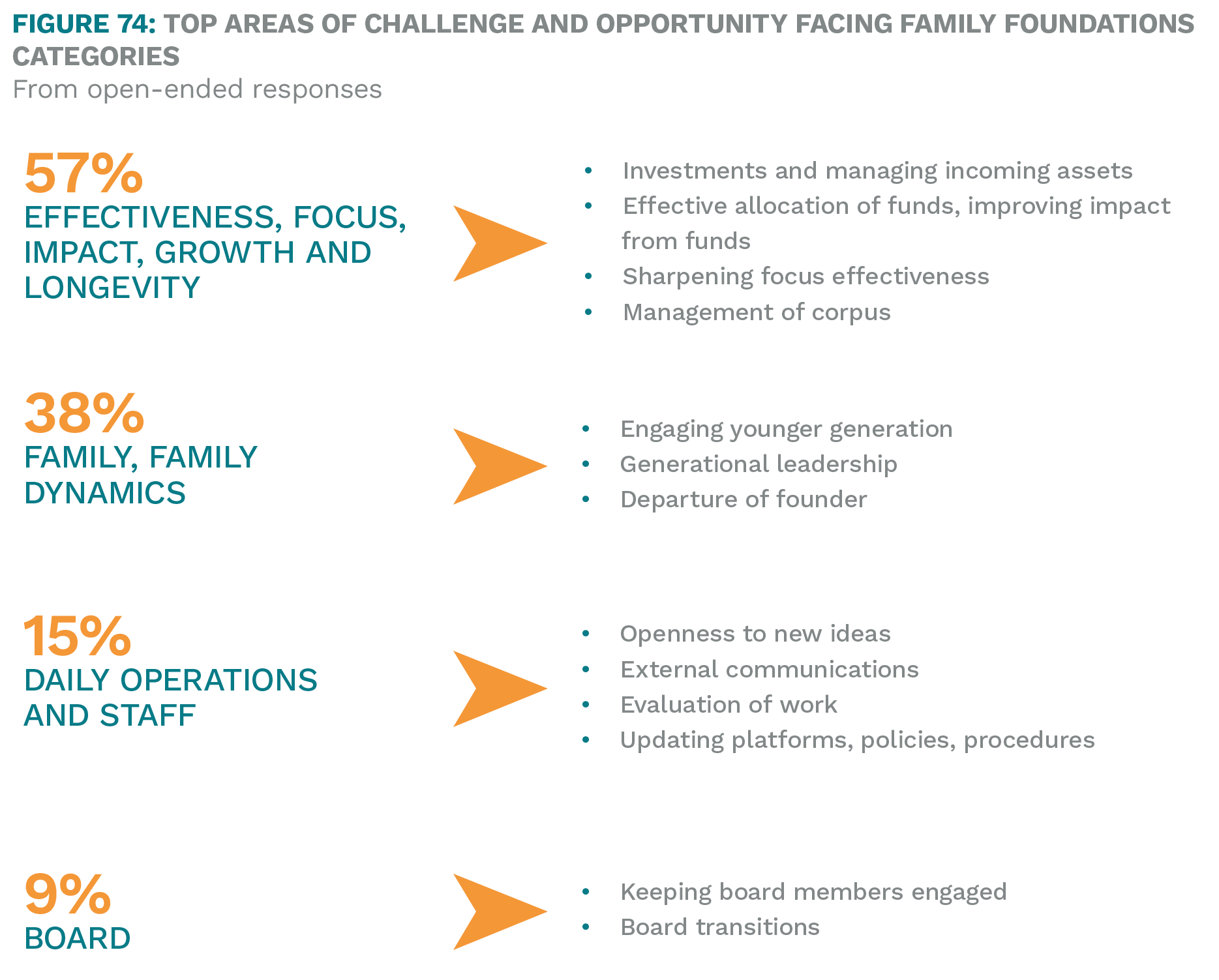
Anticipated Changes: Assets
Currently, 31% of foundations expect an increase in foundation assets in the next four years, notably lower than foundation expectations in 2015. Possible explanations for this may be overall views of the future of global markets, increasing use of other philanthropic vehicles by newer donors, or plans to increase payout rates among some foundations in the future.
Indeed, nearly 30% of all foundations report plans to increase their payout rate and institute or expand mission/impact investing; both are notably higher than in 2015. Conversely, only 2% of foundations report plans to decrease payout rate (compared to 6% in 2015).
The oldest (16%) and largest (15%) are most likely to report plans to reduce assets in the future.
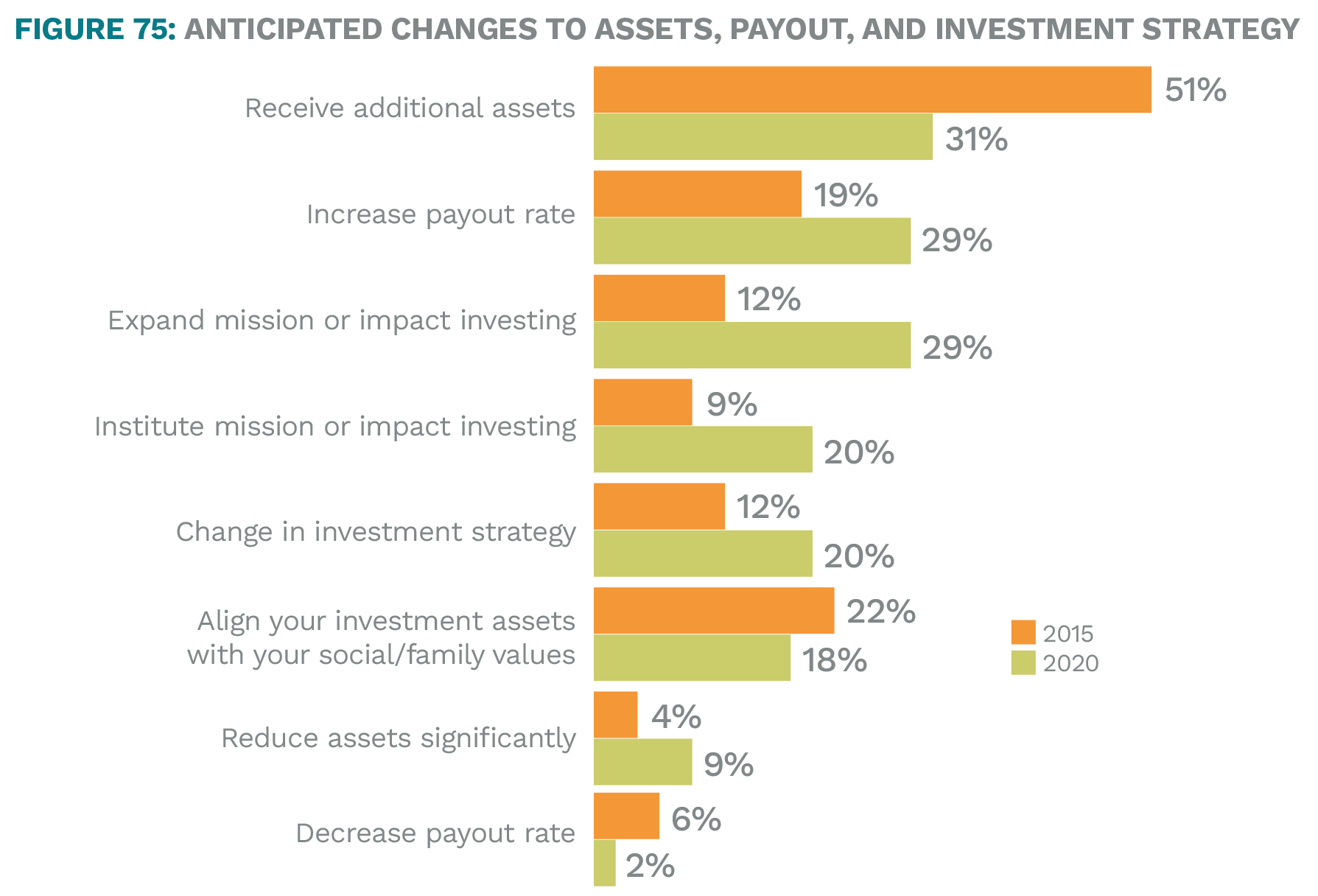
The majority (60%) of the newest foundations (formed since 2010) expect an increase in assets in the near future. More than half plan to increase their payout rate and add/expand mission investing. One in three will institute mission or impact investing.
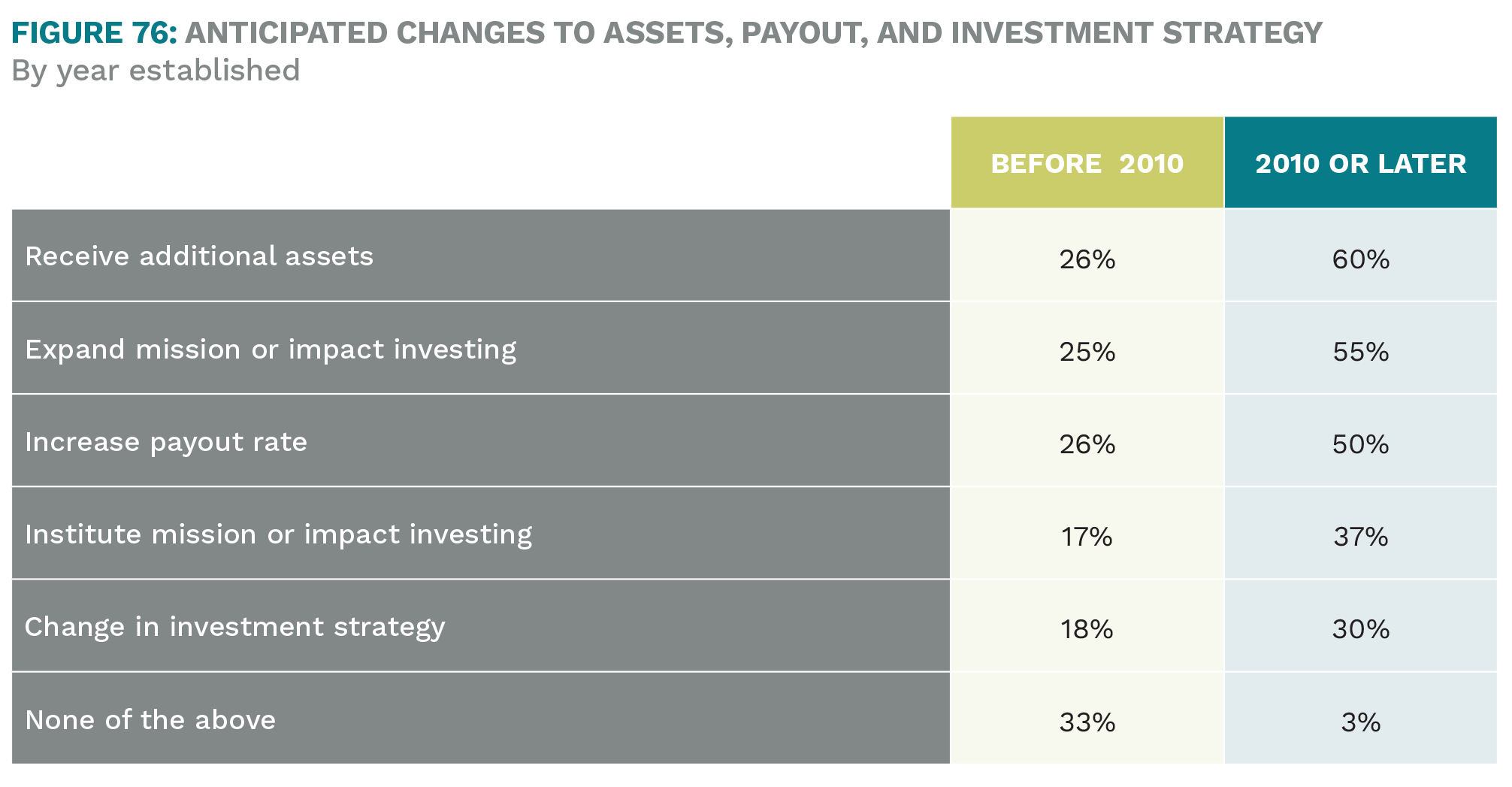
Anticipated Changes: Board and Staff
37% percent of family foundations plan to increase the number of younger family members serving on the board, and 28% say they will give younger family “more say” in foundation operations and giving. One in three foundations have DEI initiatives in their future plans, and there is a sizable increase (21%, as opposed to 4% in 2015) in the number who plan to increase racial/ethnic board diversity.
About one-fourth of foundations expect a change in board leadership, and to expand staff over the next four years.
Foundations created before 1990 are more likely to anticipate changes in board leadership (40%). The oldest foundations will more often increase younger family board membership (48%) and change senior staff leadership (28%).
A higher portion of the newest foundations will expand staff (44%), increase non-family board membership (52%), increase racial diversity on the board (46%), and discuss the role of racial equity in their work (27%).
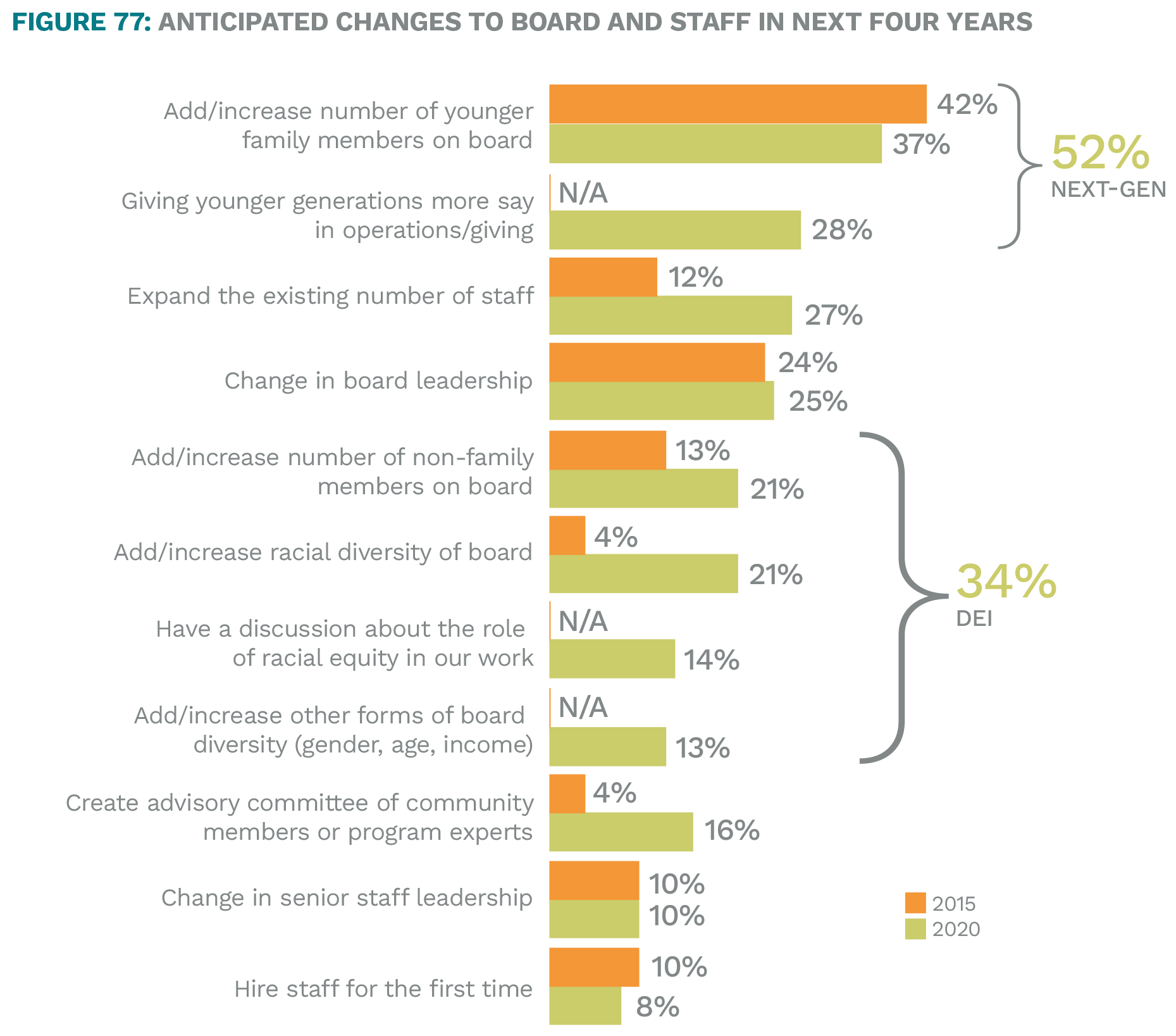
Anticipated Changes: Giving Practice
Today, more foundations (31%) plan to expand their giving priorities than in 2015 (22%). They also are more likely to have plans to give more multi-year grants and increase capacity-building support.
An even higher portion of the newest foundations plan to increase multi-year grants (51%), increase capacity-building support (48%), apply a racial equity perspective to giving (46%), and increase general operating/unrestricted grants (37%).
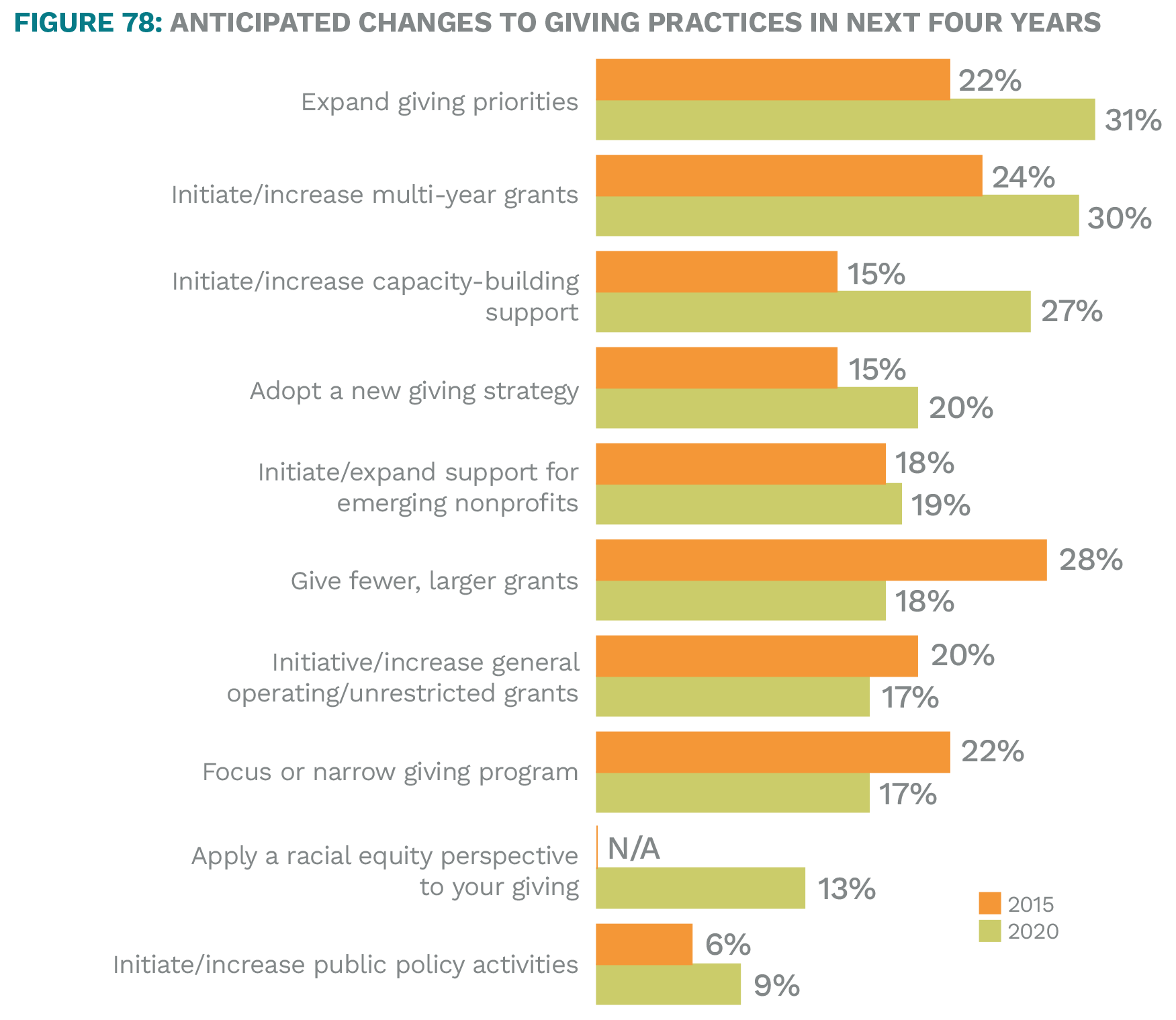
Anticipated Changes: Evaluation and Transparency
More than one-third of foundations plan to increase transparency in the future by reporting on demographics about the board, staff and grantees. About 30% will expand reporting about the foundation and opportunities for grantees to provide feedback. The number of foundations planning to make these changes has increased since 2015, from 17% in 2015 to 30% in 2020.
The number of foundations that will collect data on impact and outcomes has increased only slightly since 2015, by a mere 1%. The intent to evaluate grantees or clusters of grantees has decreased: only 18% plan to initiate or expand evaluations in 2020.
The types of foundations least likely to anticipate these changes include the oldest (52%) and smallest (58%).
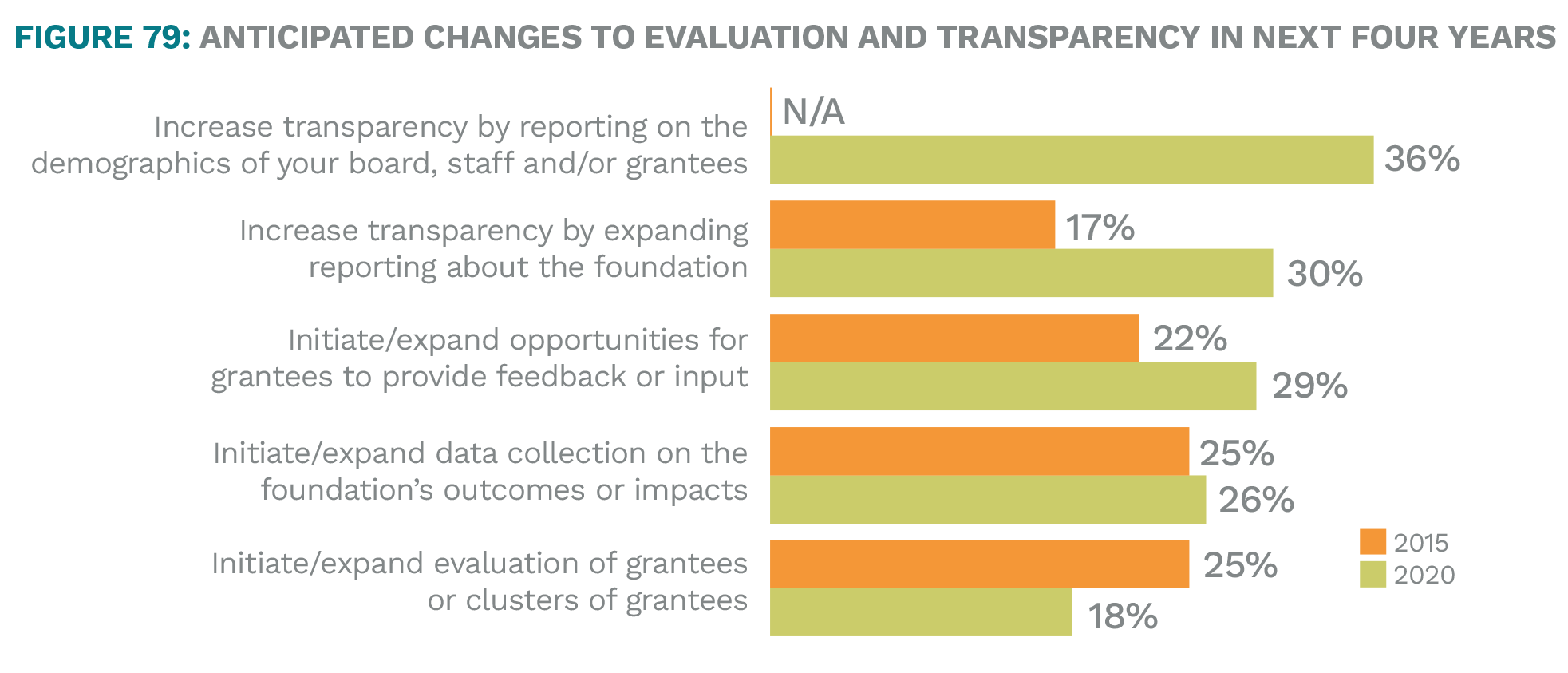
The full Trends 2020 study is available here.
